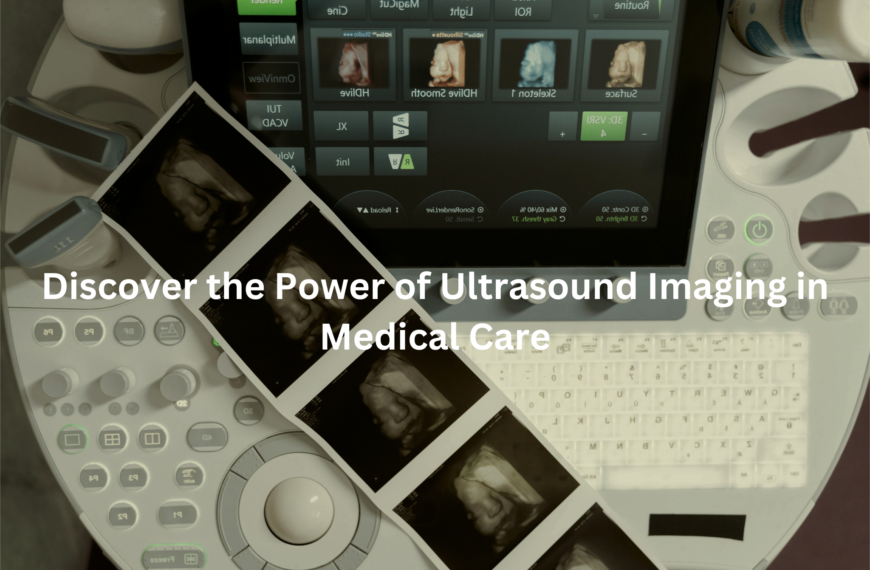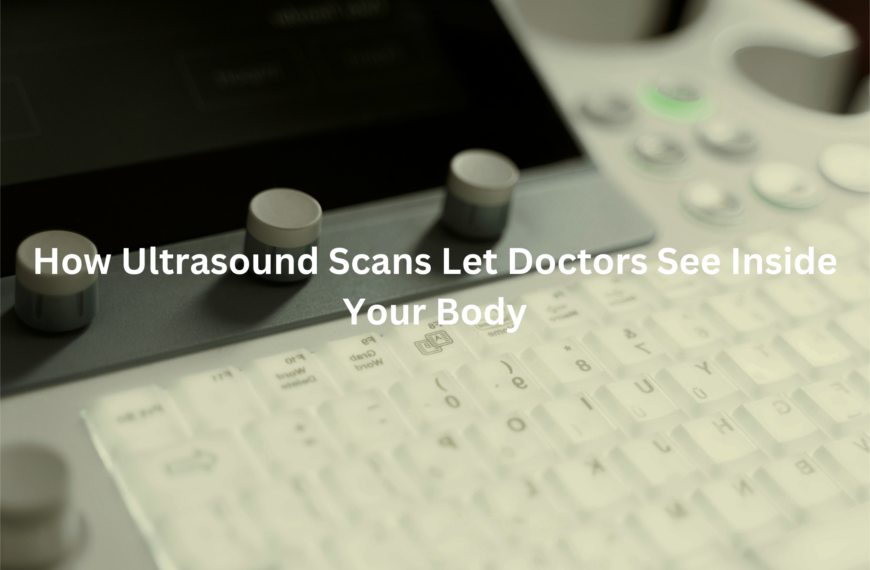Learn how X-rays create images, their medical applications, and how to stay safe during exams.
X-rays play a crucial role in diagnosing medical conditions by producing images of internal structures in the body. Understanding how X-rays work, the technology behind them, and how radiation interacts with tissues helps ensure accurate results and safety during medical exams. This guide breaks down the essentials of X-ray imaging, its applications, and radiation protection.
Key Takeaways
- X-rays are electromagnetic radiation used to create detailed images of the inside of the body.
- Radiation exposure can be minimised through optimised techniques and protective equipment during X-ray procedures.
- X-rays are vital for diagnosing a range of medical conditions, including broken bones, lung cancer, and internal injuries.
How X-rays Are Generated
The X-ray machine is essential in medical imaging, allowing doctors to examine the inside of the body without making an incision. This technology relies on the X-ray tube, a critical component responsible for generating the images we depend on.
At its core, the X-ray tube contains an electron beam accelerated by an electric field. The beam is directed at a target material, typically tungsten. Upon impact, the energy from the electrons excites the atoms in the material, causing the emission of X-rays—an electromagnetic radiation that passes through the body to form an image.
Key points to consider in X-ray imaging:
- Tube Voltage (kVp): Controls the energy of the X-ray beam.
- Current (mA): Determines the number of X-rays produced.
- Exposure Time: Affects image clarity and radiation dose.
By carefully managing these factors, the X-ray machine ensures precise imaging while minimising unnecessary radiation exposure, enabling doctors to diagnose conditions accurately. (1)
X-ray Technology: Electromagnetic Radiation
X-rays are a powerful form of electromagnetic radiation, similar to visible light but with much higher energy. These high-energy photons interact with matter in unique ways, creating the images used in medical diagnoses.
The energy of an X-ray determines its ability to travel through the body. Higher-energy X-rays can pass through soft tissues easily, but struggle to penetrate denser materials like bones. This difference in absorption results in varied image contrasts:
- Bones appear white, absorbing more X-rays.
- Soft tissues show up in shades of gray, absorbing fewer X-rays.
As X-rays interact with tissues, they either get absorbed (photoelectric effect) or scatter (Compton scattering). These effects are crucial for image interpretation, helping doctors discern soft tissues, blood vessels, and bones with clarity. The goal is to maximise the detail captured, ensuring all structures are visible for accurate diagnosis. (2)
X-ray Interaction with Tissues
X-ray photons, when they pass through the body, interact with different tissues in a few key ways. There are two main types of interactions that affect how well we see the internal structures in an X-ray image.
Photoelectric Effect
In dense tissues like bones, X-ray photons tend to get absorbed in what’s known as the photoelectric effect. When an X-ray hits the atoms in bone, it transfers all of its energy to an electron within the atom, knocking it out of its orbit. This process creates an image with a high contrast, which is why bones appear bright white on an X-ray.
Compton Scattering
In softer tissues, like muscles or organs, X-ray photons typically experience Compton scattering. This is where the photon loses part of its energy and changes direction. This scattered energy contributes to image noise and can reduce clarity. So, when you look at a soft tissue image, you might notice it’s not as sharp or distinct as the bone structures.
Shades of Gray
The different ways X-ray photons interact with tissues result in varying shades of gray on the film or digital screen. Dense structures like bones absorb more energy and appear white, while softer tissues like muscles and organs allow more X-rays to pass through, appearing darker. This contrast is what allows doctors to detect abnormalities, fractures, infections, and even foreign objects hidden inside the body.
Common Uses of X-rays in Medical Imaging
X-rays are a versatile tool in the medical field, used for everything from simple fractures to complex diseases. Here’s a look at some of their most common uses:
Radiography
Radiography is the primary use of X-rays in the medical world. It’s used to diagnose conditions such as fractures, infections, and certain tumours. When a patient comes in with a suspected broken bone, for example, a quick X-ray can confirm whether there’s a fracture and where it’s located.
Chest X-rays
Chest X-rays are particularly useful for detecting lung-related conditions. Whether it’s a routine checkup or when a doctor suspects an issue like pneumonia, tuberculosis, or even lung cancer, a chest X-ray can provide a clear view of the lungs and surrounding tissues.
CT Scans
For more detailed internal views, doctors turn to CT scans, which use X-rays to create cross-sectional images of the body. These scans can give a three-dimensional view of internal structures, making them invaluable for diagnosing conditions like cancers, internal bleeding, and organ abnormalities.
Fluoroscopy
Fluoroscopy is a real-time imaging technique, often used in procedures such as gastrointestinal studies. It allows doctors to watch how substances move through the body, which can be crucial for understanding digestive issues or performing certain surgeries. For example, in barium swallow tests, fluoroscopy can show how food moves down the esophagus, helping doctors identify blockages or other problems.
Radiation Exposure in X-ray Procedures
Credits: Nabil Ebraheim
While X-rays are incredibly helpful in diagnosing conditions, they do come with some risks, primarily due to radiation exposure.
Understanding Radiation Exposure
X-rays are a form of ionising radiation, which means they have enough energy to remove electrons from atoms, potentially causing damage to the cells they pass through. Over time, or with excessive exposure, this can increase the risk of developing conditions like cancer. However, the doses of radiation used in typical X-ray procedures are generally low, and the benefits far outweigh the risks when used appropriately.
Optimising Radiation
Medical professionals take care to optimise the radiation dose used during an X-ray procedure. This is done by adjusting factors like the intensity of the X-ray beam, exposure time, and the sensitivity of the imaging equipment. The goal is always to use the lowest amount of radiation needed to achieve a clear, diagnostic image. Additionally, healthcare providers often assess whether the X-ray is absolutely necessary, ensuring that it’s not being overused.
Radiation Protection in X-ray Imaging
Radiation safety is a significant consideration in X-ray imaging. Both patients and healthcare workers need to take precautions to minimise unnecessary exposure.
Protective Measures
One of the most common protective measures used during X-ray procedures is the lead apron, which helps shield the body from unnecessary radiation. In addition to aprons, lead shields are often used to protect parts of the body that don’t need to be imaged, like the abdomen or gonads.
Healthcare workers, especially those in hospital X-ray departments, are often exposed to X-rays as part of their daily work. Therefore, they wear lead aprons, gloves, and sometimes even goggles to protect themselves from radiation. The use of shielding and proper positioning of equipment is essential for reducing exposure.
Best Practices
Radiologists and technicians are trained to ensure that radiation exposure is kept as low as possible. This includes using the appropriate X-ray techniques, like lowering the radiation dose or opting for alternative imaging methods when necessary. For example, some procedures might use magnetic resonance imaging (MRI) or ultrasound when X-rays are not required.
X-rays for Diagnosing Medical Conditions
X-rays are a diagnostic tool for a wide variety of medical conditions, from broken bones to foreign objects inside the body. Here’s a quick rundown of some of the most common conditions detected with X-ray imaging:
Broken Bones
Fractures are probably the most common reason for an X-ray. When a patient reports a painful injury or appears to have broken a bone, an X-ray can confirm the break and help doctors determine the best treatment, whether that’s a cast, surgery, or something else.
Foreign Objects
X-rays are also used to locate foreign objects that may have entered the body. This could include things like swallowed objects or shrapnel from an injury. The high contrast of bones against soft tissues makes it easier to spot metal or other materials inside the body.
Cancers
X-rays are often part of the diagnostic process for cancers. For example, a mammogram is a special type of X-ray used to detect breast cancer. Lung cancer is commonly detected with chest X-rays, which can show tumours or masses in the lungs.
Preparing for an X-ray Examination
While X-ray exams are quick and painless, there are a few preparations that need to be made, particularly for certain procedures.
Special Preparation
For some X-rays, patients may need to follow specific instructions beforehand. This could involve fasting for several hours before the exam or removing any metal objects (like jewellery or hairpins) to prevent interference with the images.
Considerations for Vulnerable Populations
Pregnant women are especially cautious with X-ray exposure. While the risk is low, doctors generally avoid unnecessary X-rays during pregnancy, especially in the first trimester. Children are also more sensitive to radiation, so extra precautions are taken when imaging young patients.
Conclusion
With the right knowledge and precautions, X-rays remain an invaluable tool in the medical field. Their ability to see inside the body without the need for surgery is unmatched, and when combined with modern safety practices, they offer a reliable and effective means of diagnosing a range of conditions.
FAQ
What is an X-ray machine used for?
An X-ray machine is commonly used in medical imaging to look inside the body without needing to make an incision. It helps healthcare providers detect various medical conditions, such as broken bones, tumours, and other internal structures that might not be visible externally. X-ray machines create images called X-ray images, which show the body’s bones and tissues in different shades of grey, depending on how much energy the X-rays absorb.
How do X-ray beams work to create images?
The X-ray beam passes through the body and interacts with different tissues. Denser materials, like bones, absorb more of the X-ray photons, making them appear white on the X-ray images. Softer tissues, like muscles and fat, absorb fewer photons and show up in shades of grey. The X-ray beam helps reveal body structures that can be examined to diagnose health conditions.
Are X-rays safe and is there any radiation exposure?
X-rays do involve some exposure to radiation, but the dose of radiation is typically very low during a standard X-ray examination. Radiation protection measures are taken in medical settings to ensure radiation exposure is minimised. The level of radiation used depends on the type of X-ray procedure being done, like a chest X-ray or a more detailed X-ray examination of internal structures.
What should I expect during a chest X-ray?
A chest X-ray is a common procedure used to check for conditions like lung cancer, infections, or blood clots. During the examination, you’ll stand in front of the X-ray tube while the X-ray beam passes through your chest. You may be asked to hold your breath for a moment to ensure clear X-ray images are taken. The process is quick, non-invasive, and usually painless.
How do X-rays compare to other forms of radiation?
X-rays are a form of electromagnetic radiation, just like radio waves and light, but they have much higher energy levels. This allows them to penetrate the human body and produce images of internal structures. However, unlike radio waves, which are harmless, excessive exposure to X-ray radiation can pose risks, such as an increased risk of cancer. Therefore, radiation risks are carefully managed during medical procedures.
Why do different tissues look different in X-ray images?
When X-rays pass through the human body, they interact differently with various tissues. Dense materials, like bones, absorb more of the X-ray photons and appear white on the X-ray image. Softer tissues, such as muscles and fat, absorb fewer X-rays and appear in different shades of grey. This contrast allows doctors to see and evaluate body structures like blood vessels, internal organs, and bones.
References
- https://www.healthdirect.gov.au/x-rays
- https://www.insideradiology.com.au/plain-radiograph-x-ray/




